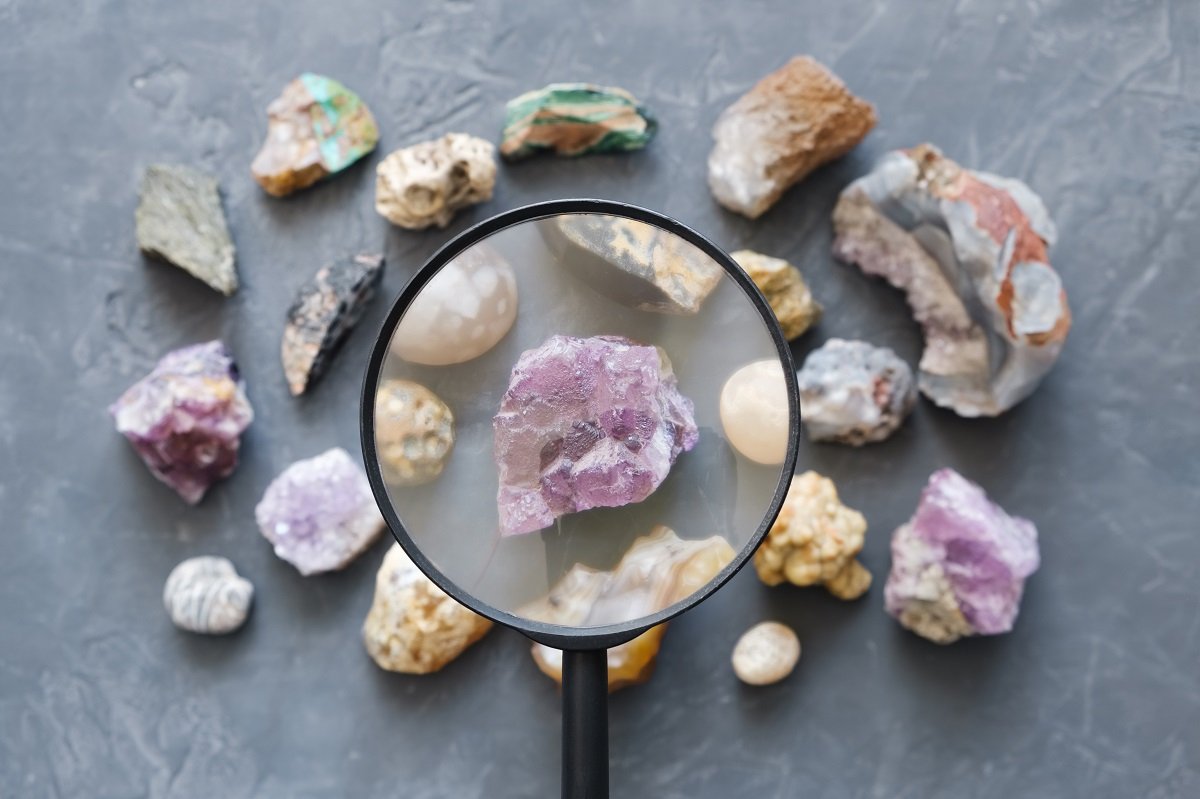Minerals are the building blocks of rocks and play a crucial role in geology, industry, and daily life. With thousands of minerals existing in nature, geologists rely on systematic identification techniques to classify them based on their physical and chemical properties. Proper mineral identification helps in understanding Earth’s composition, locating valuable resources, and studying geological processes.
Why Is Mineral Identification Important?
Identifying minerals is fundamental in various fields, such as:
- Geology: Helps classify rocks and understand Earth’s history.
- Mining and Resource Exploration: Determines the economic value of mineral deposits.
- Material Science: Assists in selecting minerals for industrial applications.
- Gemology: Evaluates gemstones based on mineral composition.
By using a systematic approach, geologists can accurately classify minerals and distinguish between similar-looking specimens.
Essential Mineral Identification Techniques
Geologists use a combination of visual, physical, and chemical tests to classify minerals. The most common identification techniques include:
1. Color and Streak Test
Color is one of the first observations in mineral identification. However, it can be misleading since impurities may alter a mineral’s true color. For example:
- Quartz can be clear, pink (rose quartz), or purple (amethyst).
- Pyrite (fool’s gold) looks similar to gold but differs in other properties.
To get a more reliable result, geologists use the streak test. A mineral is scratched against a streak plate (unglazed porcelain) to reveal its powdered color, which is often more consistent than the external color.
Examples:
- Hematite (iron oxide) appears red-brown on a streak plate, regardless of its external color.
- Pyrite (gold-like appearance) leaves a greenish-black streak.
2. Luster: How a Mineral Reflects Light
Luster describes how a mineral’s surface interacts with light. The main types of luster include:
- Metallic: Reflective, like polished metal (e.g., Galena, Pyrite).
- Vitreous (Glassy): Shiny, like glass (e.g., Quartz, Calcite).
- Pearly: Soft, iridescent shine (e.g., Talc).
- Greasy or Waxy: Appears oily or wet (e.g., Opal).
- Dull or Earthy: No shine, rough texture (e.g., Kaolinite).
Luster helps differentiate between metallic and non-metallic minerals and is an essential factor in mineral classification.
3. Hardness: Mohs Scale of Mineral Hardness
The Mohs hardness scale ranks minerals from 1 (softest) to 10 (hardest) based on their resistance to scratching.
| Mohs Hardness | Mineral | Common Test |
|---|---|---|
| 1 | Talc | Scratched easily with a fingernail |
| 2 | Gypsum | Scratched by a fingernail |
| 3 | Calcite | Scratched by a copper coin |
| 4 | Fluorite | Scratched by a steel nail |
| 5 | Apatite | Scratched by a knife blade |
| 6 | Orthoclase Feldspar | Scratches glass |
| 7 | Quartz | Scratches steel and glass |
| 8 | Topaz | Scratches quartz |
| 9 | Corundum (Ruby, Sapphire) | Scratches topaz |
| 10 | Diamond | Hardest naturally occurring mineral |
This test helps geologists quickly distinguish between minerals based on their relative hardness.
4. Cleavage and Fracture
Cleavage refers to how a mineral breaks along flat planes due to its atomic structure. Minerals with strong cleavage split into predictable, smooth surfaces.
Examples:
- Mica: Splits into thin, flexible sheets due to perfect cleavage.
- Halite (Salt): Breaks into cubic fragments.
Fracture, on the other hand, occurs when a mineral breaks in an irregular, rough manner instead of along planes.
Examples:
- Quartz: Displays conchoidal (curved, shell-like) fracture.
- Obsidian: Has a sharp, glass-like fracture.
Both cleavage and fracture are critical in distinguishing between similar-looking minerals.
5. Density and Specific Gravity
Density refers to the mass of a mineral per unit volume. Specific gravity (SG) compares a mineral’s weight to the weight of an equal volume of water.
Examples:
- Gold (SG ~19.3) is much denser than Pyrite (SG ~5.0), helping differentiate between them.
- Galena (SG ~7.5) is heavier than most silicate minerals.
This test is useful for identifying minerals with similar appearances but different densities.
6. Acid Reaction (Effervescence Test)
Some carbonate minerals react with acids by fizzing or bubbling. Geologists use dilute hydrochloric acid (HCl) to test for this reaction.
Examples:
- Calcite (CaCO₃) fizzes when exposed to HCl.
- Dolomite (CaMg(CO₃)₂) reacts weakly unless powdered.
This test helps confirm the presence of carbonate minerals in rocks.
7. Magnetism
Certain minerals contain iron and exhibit magnetic properties. A simple magnet can help identify them.
Examples:
- Magnetite (Fe₃O₄): Strongly magnetic.
- Hematite (Fe₂O₃): Weakly magnetic in some cases.
Magnetism is a quick and effective way to identify iron-bearing minerals.
8. Fluorescence and Phosphorescence
Some minerals glow under ultraviolet (UV) light due to fluorescence or retain their glow even after the light source is removed (phosphorescence).
Examples:
- Fluorite: Glows in various colors under UV light.
- Calcite: May fluoresce red, blue, or green.
This test is used in mineral collection and identification of rare specimens.
9. Advanced Techniques: X-Ray Diffraction (XRD) and Electron Microscopy
For precise identification, geologists use advanced techniques like:
- X-Ray Diffraction (XRD): Determines a mineral’s atomic structure.
- Scanning Electron Microscopy (SEM): Examines mineral surfaces at a microscopic level.
- Spectroscopy: Identifies minerals based on their interaction with light.
These laboratory methods provide accurate mineral classification, especially for complex mineral assemblages.
Summary
Mineral identification is a crucial skill in geology, requiring a combination of physical tests, chemical reactions, and advanced analysis. By using techniques such as hardness testing, streak tests, cleavage observation, and acid reactions, geologists can classify minerals with precision.
Whether for scientific research, mining exploration, or gemology, understanding mineral properties helps unlock the secrets of Earth’s materials. With the right knowledge and tools, even amateur geologists can begin identifying minerals and exploring the fascinating world beneath our feet.


